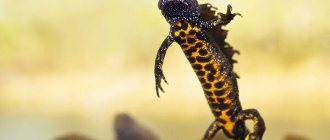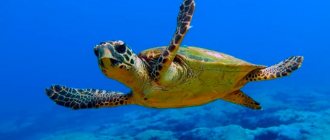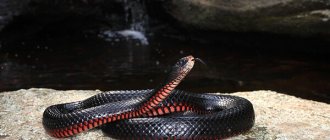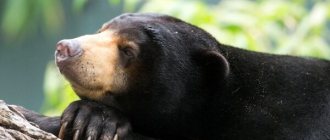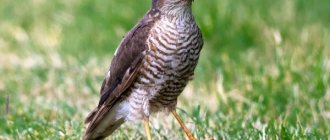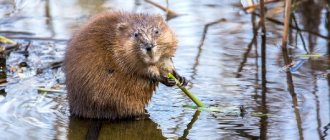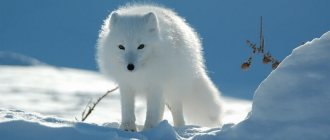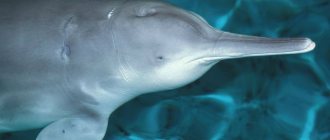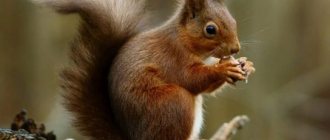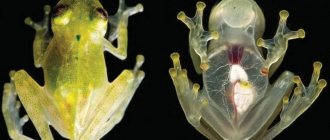Agile lizards in their natural environment
As already noted, these lizards are characterized by a fairly large habitat; they inhabit the territory of Russia up to South Karelia, the south of the Arkhangelsk region, the Komi Republic, Ugra and are found in the Western Baikal region.
However, common lizards live not only in Russian spaces, but also in Southern England, Eastern France, Poland, the Baltic States, Belarus, Ukraine and other former Soviet republics.
These animals settle in dry areas well warmed by the sun's rays - flat and mountainous, but not higher than one and a half kilometers. They create pairs and hide in secluded places at night - in burrows, under snags or boulders. Lizards also use similar shelters for wintering.
Where do viviparous lizards live?
Among their fellows, viviparous lizards occupy a special position, this mainly concerns their habitat. How did this small lizard manage to populate such vast spaces? They live in almost the entire forest zone of Eurasia: in the west from Ireland, Great Britain and the Pyrenees to the Shantar Islands, Kolyma and Sakhalin in the east. In the west of their range, viviparous lizards live from the Kola Peninsula and spread beyond the Arctic Circle to the lower reaches of the Yenisei. On Sakhalin, viviparous lizards live everywhere. In the south, representatives of the species live in the forest zone.
Lizards of this species live in almost the entire forest zone of Eurasia.
The habitat of viviparous lizards is forest edges, shrubs along the banks of water bodies, and clearings in forests of various types: coniferous, deciduous and mixed. Quite often they inhabit wet floodplain meadows that border on forests, or areas where there are areas with shrubs and young alder trees. Only this species is found in the upper swamps. In Siberia they can enter the tundra. In the tundra, viviparous lizards live in swampy areas on hummocks, which are surrounded on all sides by water. These animals also live near populated areas where there are damp areas, and they can bask in the sun on wooden steps and on logs near houses. On forest edges they settle in stumps, fallen trees, between roots and bushes. Viviparous lizards use dense forest litter, rodent burrows, rotten stumps, and crevices between stones as shelters, but they do not build their own shelters.
Appearance of a sand lizard
The length of individuals from the nose to the end of the tail is about 24-28 cm. Outwardly, they resemble tailed amphibians, but have a more slender physique.
External data
Lizards have the following structure:
- They have a small head , turning into a pointed muzzle, on which there are two wide-open nostrils. The neck is shortened and quite massive.
- The eyes are covered with eyelids, a transparent or translucent membrane. It is called the “third eyelid” and provides hydration to the eye membranes.
- Behind the eyes there are round eardrums - something, and these animals have excellent hearing.
- fork at the end, acts as an organ of touch. You can catch the lizard exploring various objects when it sticks out its tongue and runs it over surfaces.
- The limbs of the lizard look like frog legs, each of them has 5 thin fingers with tenacious claws. Animals use them for climbing. But they do not have membranes.
- Body covered with dry skin with horny scales. On the face and tummy the scales are larger, resembling large shields.
As they mature and increase in size, lizards begin to shed. This process is not frequent, occurring on average once every 4 years. They breathe only with their lungs; animals have no other respiratory organs.
Colors
As for coloration, males have quite a lot of variations - from light greenish to almost black tones. In the south, green lizards are more common. During courtship with females, males acquire brighter colors.
Females cannot boast of either brightness or variety of colors, although their gray or brown body is covered with bizarre patterns. The young have a body of the same tone, only the back is decorated with three stripes.
External structure
The eggs of reptiles are large, rich in yolk and protein, covered with a dense parchment-like shell, and develop on land or in the mother’s oviducts. There is no aquatic larva. A young animal born from an egg differs from adults only in size.
Dry skin is covered with horny scales and scutes.
- Language
- Nostrils
- Eyes
- Head
- Neck
- Torso
- Eardrum
- Scales
- Claws
- Forelimb
- Hind limb
- Tail
Temperament and livability of nimble lizards
Lizards live in burrows that they dig themselves, or they occupy someone else’s abandoned housing. Most often, they do not move far from him, they even hunt 10-15 meters from the house. When a threat arises, the animal begins to run away, randomly changing directions, thereby causing the attacker a feeling of confusion.
Lizards are most active during the day. They have excellent physical characteristics and extraordinary endurance, which is why they got their name - quick. They can run very fast, jump, climb well, and are capable of abruptly changing their trajectory even at high speed. It costs such tricksters nothing to catch a fly on the fly.
In addition, they behave very carefully and never let their guard down. Any sound, even a faint one, makes the lizard want to hide, and it quickly scurries into a hole or quickly climbs up branches. If, while chasing a lizard, the offender manages to grab its tail, it can escape by throwing away a piece of it.
In response to pain, one of the vertebrae breaks in the middle, and the animal does not bleed, since the mechanism of contraction of the muscle tissue around the wound is triggered. Then an intensive regeneration process occurs, and the fallen part of the tail grows back. True, it is not so long, and its color differs from the general color. But thanks to this reflex, the creature manages to save life.
Lifestyle and behavioral characteristics of the green lizard
The peak activity of green lizards occurs in the morning hours - at this time they hunt energetically. During hot hours they usually take refuge in shelters, and after 16.00 they usually come to the surface again.
Green lizards take refuge in deep burrows, sometimes reaching more than a meter in length. They are usually located on slopes, among stones, bushes and trees. Reptiles often occupy rodent burrows or tree hollows.
Green lizards willingly climb bushes and even low trees to bask in the sun. Sometimes you can see several individuals of this species on one bush.
If a lizard is startled, it quickly rushes to the nearest bush or tree and there usually awaits further actions of a potential enemy. If she is no longer disturbed, she quickly runs to a new place or climbs up the trunk, adhering to the side opposite from the enemy. Once caught, the green lizard does not miss attempts to defend itself - it begins to bite, although its teeth cannot cause any tangible harm to a person.
New pet at home - what to do
Even a beginner understands that a lizard is not the most common pet, and it requires special care. What to do if such living creatures appear in the house?
- First of all, you should examine the lizard for parasites - often mites settle on their skin, which are easily detected due to their bright coloring. As a rule, such parasites do not pose a danger to people, but they cause discomfort in the lizard and can even cause its death.
- The pet should be placed in a quarantine tank for 14-21 days.
- It is recommended to carry out deworming using special products intended for reptiles.
Fertilization
Life appeared in water. Metabolic reactions occur in aqueous solutions. Water makes up the largest part of any organism. Individual development of the body requires significant amounts of water. Finally, without water, sperm movement and egg fertilization are impossible. That is why even in amphibians, fertilization and development are strongly associated with the aquatic environment. Overcoming this connection by reptiles is a major breakthrough in evolution.
The transition to reproduction on land was possible only for animals capable of internal fertilization.
Male reptiles have a special organ in the form of a permanent or temporary protrusion, with the help of which seminal fluid from the testes is introduced into the female’s genital tract. This helps protect the sperm from drying out and allows them to move. To meet them, eggs formed in the ovaries descend through the oviduct. There, in the oviduct, the fusion of gametes occurs.
Terrarium equipment
A lizard cannot live in a jar or box, so for a comfortable living it will need a properly equipped terrarium:
- for one individual, a tank measuring 40x60x40 cm is sufficient;
- the container should have a door located in the side wall - the lizard will not perceive an intrusion every time as an attempt to attack, and there will be much less stressful situations;
- a lizard can live in a spacious aquarium with low walls - but no drawers or boxes!
Description of the green lizard
The length of the green lizard reaches 30-40 cm, of which the tail accounts for 20-26 cm. The dorsal scales are elongated and hexagonal with well-developed ribs; slightly larger on the sides than in the middle of the back. The abdominal scutes are located in 6 (less often in longitudinal rows). The femoral spurs reach the knee bend.
slightly larger on the sides than in the middle of the back. The abdominal scutes are located in 6 (less often in longitudinal rows). The femoral spurs reach the knee bend.
Juveniles are colored brown and brown, sometimes with 2 light stripes running along the sides of the ridge. As they age, these lizards turn green.
In the spring, the throat and neck of males become bright blue, in the summer they become dark blue, and in the fall they become lilac.
In females, as a rule, the throat is white, only in very old individuals it can become bluish. The ventral side of males is bright yellow, while that of females is white.
Temperature maintenance
The owner needs to take care of the microclimate - he should equip the lizard’s home with a thermometer and monitor the indicators, even at night. It is advisable to equip the tank in such a way that it has 2 zones - hot (34°-36°C) and cold (not lower than 30°C). At night, the thermometer should not fall below +21°C, otherwise the animal’s metabolic processes slow down, activity decreases, and some individuals begin to prepare for hibernation.
To maintain the temperature, it is best to use special devices that can be purchased at any pet store. The following devices are suitable for terrariums:
- lamps - they come in a variety of varieties: mirror, incandescent, halogen, etc.;
- Thermal stones are artificial minerals that, when turned on, heat the tank and are an excellent decoration for it. There is only one drawback - they can heat up to higher levels than stated;
- thermal cords - they are used to heat the lower part of the terrarium, stretching under containers or inside;
- thermal mats - used in the same way as the previous device.
Other indicators for pet comfort
Stable temperature is not the only requirement for living conditions for a lizard:
- Ultraviolet rays - the pet needs sunlight, for this it is recommended to equip the terrarium with a UV lamp (5% marking). It must be turned on constantly and replaced every 6 months. If there is a deficiency of ultraviolet radiation, the animal’s body cannot fully absorb calcium, bone tissue is destroyed, and the pet dies in agony.
- Humidity control – it is recommended to install a small reservoir of water in the lizard’s home, into which it can climb on its own, and it is placed in a cool area. In addition, you can spray the interior surfaces of the terrarium daily or use moistened sponges. It is important to avoid excessive humidity, as fungi often grow in such conditions. You can avoid such a nuisance by ensuring good ventilation.
- Decor - the pet needs shelter and a pond, you can also mark twigs and snags on which the lizard will climb.
- Soil - it is placed at the bottom of the tank; any material intended for these purposes can be used. Only small shavings and sand are not suitable, as they can penetrate with food into the animal’s gastrointestinal tract and provoke various kinds of problems.
What to feed a fast pet
In their natural environment, lizards successfully hunt beetles, grasshoppers, earthworms, caterpillars and spiders, so when choosing a home diet, you should give preference to live food. Some lizard owners start catching insects for their pet, but it is worth considering that the “dinner” caught in this way may be infected with parasites.
It is much easier and safer to purchase live food at a pet store - many of them sell crickets and cockroaches. With pleasure, lizards eat mealworm larvae, tobacco hawk moths, and locusts. You can rarely give your pet meat - raw lean beef or boiled chicken, a boiled egg. Before serving, the products are crushed. When feeding a sand lizard, you should adhere to certain rules:
- the diet should not consist of the same food, for example, eating only worms can cause obesity in the lizard;
- You should periodically include special nutritional supplements in your pet’s menu, which are available in powder form;
- feeding should be daily - in summer food is given three times, in winter - twice;
- one serving should consist of 5-10 insects;
- Adults cope well with food on their own, but young animals can be helped by using tweezers to feed them.
All insects that have not become food for the inhabitant should be removed from the tank, since there have been situations where grasshoppers and crickets have caused damage to the skin of sleeping “predators”. It is important to avoid both overeating and undernutrition; in both cases, owners face serious problems - their charges get sick and most often die.
Reproduction of viviparous lizards
The higher the temperature, the faster the lizard obtains, eats and digests food.
Almost as soon as viviparous lizards emerge from hibernation, they mate; this happens in April-May. Basically, this species is ovoviviparous, that is, newborn lizards are born in transparent egg shells, from which they are instantly released. But in the Cantabrian mountains and the Pyrenees, where the climate is drier and milder, females lay eggs. The first clutch of a viviparous lizard was discovered in 1927, containing 60 eggs. The masonry was located at an altitude of about 1000 meters. The eggs were contained in a parchment-like shell, which the newborns cut through with a strong egg tooth.
In the Pyrenees, at low altitude, viviparous lizards begin to reproduce after reaching one year. Almost all females at the age of 2 years manage to lay 2 clutches per season. Females at the age of 1 year never breed at an altitude of more than 1000 meters, and only a fifth of them make a second clutch. In both cases, the development time of eggs in the first clutch is about 40 days at a temperature of +18 to +20 degrees, and the incubation period of the second clutch is more than 30 days, when the air temperature warms up to +20.5 +21.5 degrees. At altitude, the survival rate of eggs is higher, since at the bottom the clutches are destroyed by predators, for example, the mole cricket destroys up to 44% of the eggs.
Females of this species living in our country give birth to up to 12 babies, but young females who mate for the first time have much fewer babies, and larger individuals have a larger number of babies. Not all young females reproduce in their first year of life.
The gestation period is 70-90 days, newborns are usually born in July. In the terrarium, females become restless during pregnancy; they lie on their backs, lift their tails high, freeze for a certain time, or run around on the substrate.
When a female lays 10 eggs, in the first 15 minutes three babies are released from the egg shells, an hour later two more are released, and the last five are released within two hours. In nature, this process takes from 15 to 30 minutes.
The body length of newborn lizards is 18-22 millimeters, and the entire length with tail is 34-40 millimeters. Young animals often gather in groups on fallen trees or stumps. Since viviparous lizards do not care about their own offspring, the babies immediately begin to lead an independent life. The young grow quickly and by the time it is time for them to go into hibernation, their body length reaches 50-55 millimeters.
Sexual maturity in viviparous lizards occurs in the 3rd year of life. In nature, the maximum lifespan of lizards of this species is 8 years (this result was noted when observing the life of lizards living in Valdai).
Sexual maturity in viviparous lizards occurs in the 3rd year of life.
In most of their habitats, viviparous lizards coexist with common vipers, gray toads, sharp-faced and grass frogs. They often coexist with fast lizards. But at the same time, fast lizards choose drier biotopes, and viviparous lizards choose wetter places. Mammals and birds live in these places and feed on these lizards; for example, the black stork not only consumes lizards itself, but also feeds its chicks with them.
Do lizards overwinter in captivity?
Not all owners of such unusual pets provide their charges with suitable conditions for hibernation. However, it is of great importance for the life of lizards:
- individuals that do not hibernate do not reproduce, since the mechanisms influencing the mating instinct do not operate;
- “not sleeping” males become dull during the winter period, while in the spring the color intensity is not restored;
- without hibernation, animals become less active;
- Life expectancy becomes shorter, pets are more often exposed to various diseases.
What do they eat?
Green lizards are predators. The diet is dominated by spiders, hymenoptera, caterpillars, bugs, orthoptera and beetles. Moreover, gastronomic preferences depend on the time of year. Having woken up from hibernation and for some time after it (in spring and in the first days of summer), reptiles actively eat spiders and beetles. In autumn and in the second half of summer, lizards happily feed on caterpillars and orthoptera. They sometimes supplement their diet with earthworms, mollusks, phalanges, centipedes, dragonflies, dipterans and other insects. Sometimes these animals feed on plant foods, and sometimes they eat smaller lizards.
How to put your pet into hibernation and bring it out of it
This process is quite painstaking, but necessary:
- 3-4 weeks before wintering it is necessary to feed your pet more nourishingly and variedly;
- then the lizard is not given food for 12-14 days so that its intestines are cleansed;
- then you should gradually or stepwise (4°-5°C) lower the temperature in the tank. The duration of each stage is 3-7 hours;
- the ideal indicator for wintering is +5 +7C;
- You can place the lizard in a small container that has holes for air to enter and place it in the refrigerator - provided that it is possible to regulate the temperature in it.
It is worth knowing that hibernating lizards breathe approximately 2 times per minute, and it is almost impossible to detect their heartbeat. Therefore, before saying goodbye to an allegedly dead pet, you should make sure that it is not sleeping. The lizards are brought out of hibernation by gradually increasing the ambient temperature. Then it is important to provide ultraviolet light and good heating.
In the first three days, the individual can only lie down and bask, without showing much activity and refusing to eat. It is not recommended to force feed her. If everything was done correctly, the lizard will soon recover and begin to molt. Wintering lasts from 1 to 4 months. The duration of this period is determined by the following factors:
- if the lizard sleeps for less than 4 weeks, then you can expect the same problems as in the complete absence of hibernation;
- when this period drags on longer than expected, the individual experiences severe exhaustion and dies without waking up or during exit.
How to prepare an animal for keeping in a home terrarium
Preparation consists of three stages:
- Carefully examine the reptile's body for the presence of skin parasites. Most often these are ticks that are brightly colored and therefore visible even to the naked eye. These parasites are not dangerous for humans, but they cause a lot of inconvenience to the lizard itself and can even lead to its death.
- Quarantine for 2-3 weeks.
- Deworming using special anthelmintics for reptiles.
Peculiarities of reproduction of agile lizards
First of all, by looking at the male, you can find out about his readiness to mate. He lifts his body off the ground and begins to look around, looking for a potential “bride.” Having discovered a suitable individual, he pursues it. If the “race” is completed successfully, and the female falls into his arms, he, holding the base of her tail with his mouth and her body with his paws, begins to mate.
After some time, the female lays a clutch, burying 6-16 fairly large eggs in a small hole. All stages of the development of the offspring occur in the egg, and an independent young individual is born. Particularly large and confident males are capable of eating young.
Sandy lizards are perfectly adapted to living in the natural environment, which confirms their wide distribution and the presence of numerous populations. However, in order for such a pet to feel comfortable in captivity, the owner needs to try. Of course, these inhabitants are not too whimsical compared to other lizards and amphibians, but they need suitable conditions.
All the efforts made will pay off with interest - active and agile lizards will delight children and adults with their liveliness, interesting behavior and charisma. It is almost impossible to pass by the terrarium where this animal lives and not stop.
Internal structure of a lizard
Digestive system
Mouth, oral cavity, pharynx, stomach, digestive glands, pancreas, liver, small and large intestines, cloaca - these are the parts of the digestive system of reptiles.
In the mouth, saliva moistens food, making it easier to move through the esophagus. In the stomach, under the influence of gastric juice, protein foods are digested in an acidic environment. The ducts of the gallbladder, liver and pancreas open into the intestines. Here food digestion is completed and nutrients are absorbed into the blood. Undigested food remains are expelled through the cloaca.
Excretory system
The excretory organs are the kidneys, ureters and bladder.
Skeleton
The skeleton is completely bony. The spine is divided into five sections: cervical, thoracic, lumbar, sacral and caudal. The head is mobile due to the elongation of the neck and the presence of two specialized cervical vertebrae.
- Scull
- Spatula
- Bones of the forelimb
- Spine
- Ribs
- Pelvic bones
- Bones of the hind limb
The cervical region consists of several vertebrae, with the first two allowing the head to turn in any direction. And this is extremely important for orientation using the senses located on the head.
The thoracic region fixes the shoulder girdle through the chest and provides support for the forelimbs. The lumbar region provides curves to the torso that aid in movement. The powerful sacral section already consists of two vertebrae and the belt of the hind limbs is numb. The long tail provides balancing movements of the tail.
Since the oral cavity no longer participates in gas exchange, the jaws have become elongated, more suitable for their main function - capturing food. Stronger jaw muscles attached to the new projections on the skull allowed for a significantly expanded diet.
